A while back in my little contest for blog topics, the following question was one of the entries: “Is there more to the mythic symbolism of the damsel in distress than just the same poor, scantly-clad beauty trapped in an ivory tower or dungeon by a cruel villain or villainess, waiting for some handsome prince to save her?” (Question posted by Thane Woods, thanks!)
The answer to the question is a resounding “Yes! There certainly is more it it!”
Of course, it needs a little unfolding to explain the persistence of the Damsel in Distress motif.
First off, the motif is an ancient one. One of the most famous versions is the tale of Andromeda and Perseus (source material for both film versions of Clash of the Titans). The short version is that the princess Andromeda was staked out on a rock to placate a monster, and Perseus, after falling in love with her, had to rescue her.
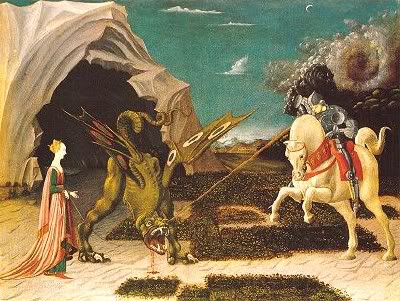
St. George rescues the Maiden
One of the things about the motif that creates the most problems these days is the passive aspect of the Damsel in these stories. She doesn’t get to do much of anything toward achieving her escape. As the twentieth century progressed, this pattern did not fit into the growing empowerment of women in society. The motif seemed loaded with an implied incompetence on the part of the female, that she could not rescue herself, that a female needed a male to rescue her.
In reaction to this understanding of the motif, we began to see many stories of female heroes rescuing themselves (or even rescuing their male counterparts), female characters who did not need the assistance (or worse yet, the guidence) of a male character to achieve their goals. In terms of gender equality, this is a good turn of events, giving growing girls active role-models in stories, encouraging girls to believe they can shape their own fates.
Princess Leia in Star Wars: A New Hope is a representative of this new sort of “rescued damsel.” She may have needed outside help to get out of her prison, but once released she shows herself to be as competent in action (if not more so) as the male heroes.
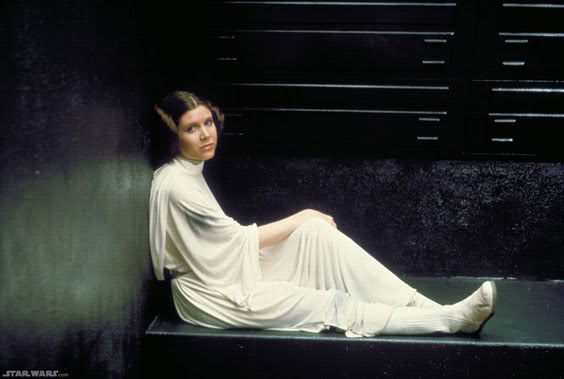 The problem for storytellers is that there remains an impulse to put a female character into hazard and in need of rescue. Why is that?
The problem for storytellers is that there remains an impulse to put a female character into hazard and in need of rescue. Why is that?
Princess Morgana in The Vikings is a feisty character in this classic mode. She is a desirable object to the Viking leader Einar, while for the earnest slave Eric, she becomes a beloved partner.
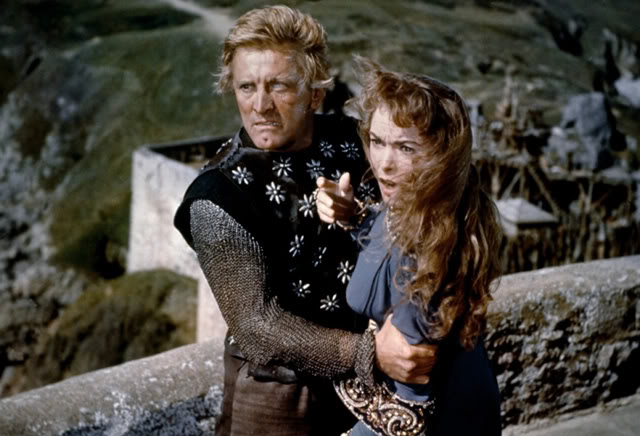 What is happening here is not an issue of gender equality or politics. When talking about mythic motifs, I usually strive to stay away from psychological interpretation, mainly because mythic symbolism is very adaptable and flexible. Mythic meaning doesn’t always have to relfect the internal, psychological states.
What is happening here is not an issue of gender equality or politics. When talking about mythic motifs, I usually strive to stay away from psychological interpretation, mainly because mythic symbolism is very adaptable and flexible. Mythic meaning doesn’t always have to relfect the internal, psychological states.
When it comes to issues of archetypes, a lot of people use the term “Jungian archetypes” and what they are actually thinking of are the seven traditional ones (Hero, Mentor, Herald, Threshold Guardian, Trickster, Shapeshifter and Shadow). But in point of fact, Jung’s archetypes are designated “Shadow, Anima, Animus, and Self.” And they are serving somewhat different functions than those of the traditional archetypes. So let’s look a bit closer.
Jung’s Shadow figure does share the same basic qualities as the traditional archetype of the same name. The Shadow represents those aspects of one’s psyche that one rejects, usually the negative qualities we wish to excise. So far so good.
The fourth Jungian archetype is the Self, the integrated identity, and in the psychological approach to storytelling, you could say that the Victorious Hero at the end of stories represents this Jungian figure.
It is with the Anima and Animus that we need to deal when it comes to the Damsel in Distress. For the Damsel in Distress represents a “psychodrama” (an acting out of issues key to one’s psyche) between the Anima and Animus.
One of the reasons why the “Hero’s Journey” seems predominantly a masculine endeavor is not that males are inherently more adventuresome or proactive, but rather that the masculine aspect of the personality (for lack of a “better” term is the active and outward directed element of our make up. Jung termed this the Animus. By contrast, the so-called feminine aspect, or Anima, is inward directed. Many usually characterize it as “passive” but I prefer to designate it as essential. It is about being something, not doing something.
The way I see it, the Animus is the part of us that takes action, reacts to external events. The Anima, in my opinion, represents those essential things that make each of us who we are: our precious dreams, hopes, loves, our emotional life.
If we look at the stories of Damsels in Distress as being a psychodrama of the Animus and Anima and their movement toward integration with each other, we get a new perspective on what is happening in stories about rescuing heroines.
Consider it: the Heroine is trapped and inprisoned by the villain, in great danger of either death or of being bonded to the villain. In terms of the psychodrama, it means that one’s very essence is cut off from the active part of one’s being, in danger of being silenced or misdirected, smothered and eventually turned into something undesirable. The Hero, the active aspect of the psyche, charges in to rescue the Desirable Essence. Battles happen, the Hero is victorious (usually), and the Hero and Heroine are joined together in a Sacred Marriage.
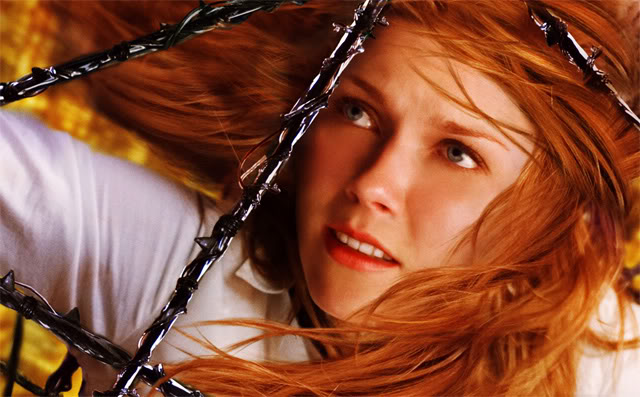 This is one of the functions Mary Jane has in Spider-Man stories. She is an externalization of the hero’s core essence, principles, loves. The world and its villains constantly try to rip those things away from the hero, in order to leave him a more controlable action machine. But the hero desires integration – so … Mary Jane must be rescued.
This is one of the functions Mary Jane has in Spider-Man stories. She is an externalization of the hero’s core essence, principles, loves. The world and its villains constantly try to rip those things away from the hero, in order to leave him a more controlable action machine. But the hero desires integration – so … Mary Jane must be rescued.
Again, this is not about gender politics. It is about psycological integration. It is about bonding our inner essence of dreams, principles, loves to our ability to take action, creating a solid partnership which enables us as individuals to be more complete human beings. Instead of being Takers-ofAction with no heart or soul, or Compassionate-Beings with no ability to take effective action based on our inner nature, the individual who has an integrated Animus and Anima becomes an Ideal Hero (regardless of whether they are male or female).
The Rescue of the Damsel in Distress will continue to be a useful story motif because of the underlying psychodrama. You doubt me?
Consider Season 5 of Burn Notice. The underlying issue for this Season has been the threat of the emprisonment of Fiona Glenanne. Over the course of the series we have watched the relationship of Michael and Fiona grow deeper and stronger. Fiona wakens Michael’s compassion for others, she frequently serves as his moral compass. She is a wonderfully constructed character, what with her trigger-happy, gun-running past. But she is also Anima to Michael’s Animus. Together, they represent integration. Of course Michael will work to “Rescue the Maiden.”
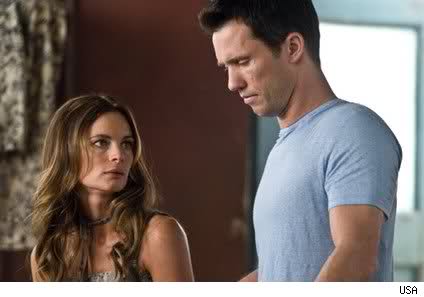
We’re not going to wipe out the motif of the Damsel in Distress. Because there is a lot more going on than “Babes in Bondage.”
(You will note that I don’t go into the sadistic bondage turns that some stories take. Sexual sadism is its own realm. But also, after what I’ve said, you can draw your own conclusions on the type of psyche represented by stories that resist and even belittle the integrated partnership of Animus and Anima.)
Pictures used in this post are copyright of their owners, and are used only for educational illustration.
For more on mythic motifs and archetypes, check out The Scribbler’s Guide to the Land of Myth, now available in both hard copy and Kindle e-text.

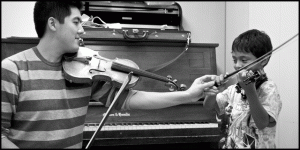

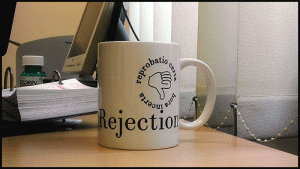

 The problem for storytellers is that there remains an impulse to put a female character into hazard and in need of rescue. Why is that?
The problem for storytellers is that there remains an impulse to put a female character into hazard and in need of rescue. Why is that? What is happening here is not an issue of gender equality or politics. When talking about mythic motifs, I usually strive to stay away from psychological interpretation, mainly because mythic symbolism is very adaptable and flexible. Mythic meaning doesn’t always have to relfect the internal, psychological states.
What is happening here is not an issue of gender equality or politics. When talking about mythic motifs, I usually strive to stay away from psychological interpretation, mainly because mythic symbolism is very adaptable and flexible. Mythic meaning doesn’t always have to relfect the internal, psychological states. This is one of the functions Mary Jane has in Spider-Man stories. She is an externalization of the hero’s core essence, principles, loves. The world and its villains constantly try to rip those things away from the hero, in order to leave him a more controlable action machine. But the hero desires integration – so … Mary Jane must be rescued.
This is one of the functions Mary Jane has in Spider-Man stories. She is an externalization of the hero’s core essence, principles, loves. The world and its villains constantly try to rip those things away from the hero, in order to leave him a more controlable action machine. But the hero desires integration – so … Mary Jane must be rescued.